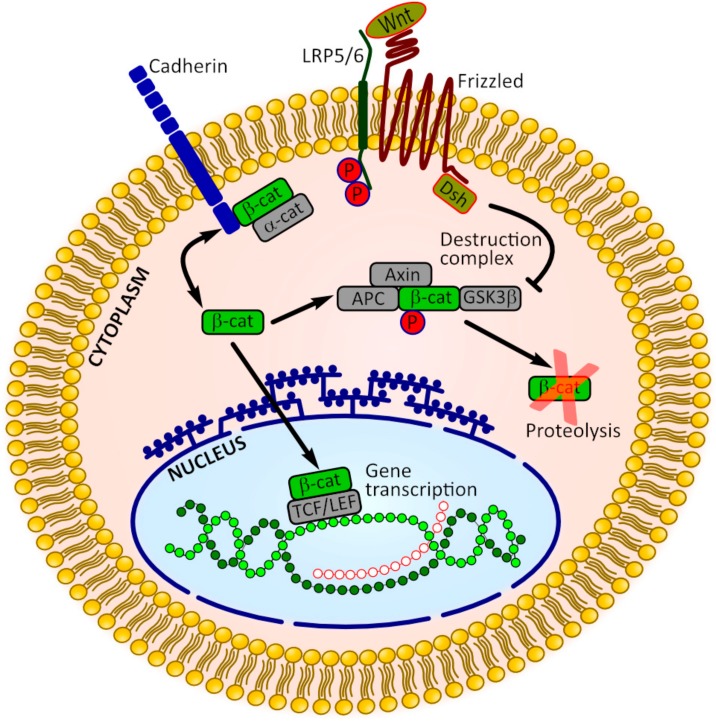Figure 3.
The interactions between cadherin-mediated adhesion and Wnt/β-catenin signaling. Cadherins bind β-catenin molecules, sequestrating them at the cell membrane. Adherens junctions weakening and disruption of cadherin/β-catenin binding results in the the release of β-catenin into the cytoplasm, making more β-catenin available in transcriptionally active pools. In the absence of Wnt signaling β-catenin levels are kept in check by the so-called destruction complex comprising, among others, adenomatous polyposis coli (APC), axin and glycogen synthase kinase 3β (GSK3β). Wnt binding to the receptors LRP5/6 and Frizzled results in the inhibition of GSK3β activity and disruption of degradation complex, followed by β-catenin accumulation and translocation into the nucleus, where it binds T-cell factor/lymphoid enhancer factor (TCF/LEF) family of transcription factors and to induce the expression of target genes [74,75].

